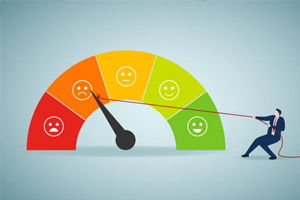Guide to finding the best student loans for college
Optimize your student loan journey with our comprehensive guide From understanding loan types to navigating repayment strategies and forgiveness programs, empower your financial decisions for a successful academic and post-graduation experience
Welcome to our comprehensive guide on navigating the complex landscape of student loans. Whether you're a prospective student exploring financing options or a current borrower seeking effective debt management strategies, this guide aims to provide you with a thorough understanding of student loans, from types and application processes to repayment strategies and loan forgiveness programs.
As the cost of higher education continues to rise, making informed decisions about student loans becomes crucial for individuals pursuing academic and career goals. This guide is designed to empower you with the knowledge needed to make sound financial choices, covering both federal and private student loans, eligibility criteria, application procedures, and the intricacies of repayment plans.
We delve into the various repayment strategies available, offering insights into standard plans, income-driven options, and the potential benefits of loan consolidation or refinancing. Additionally, our exploration of loan forgiveness programs sheds light on opportunities for borrowers in public service, education, and other qualifying fields to alleviate their student loan burdens.
Understanding the nuances of managing student loan debt is a key focus, with detailed discussions on navigating repayment challenges, exploring forgiveness options, and finding the right balance between borrowing and financial responsibility. This guide aims to serve as a valuable resource throughout your academic journey and beyond, providing clarity on the complexities of student loans and empowering you to make well-informed decisions for your future.

Understanding Student Loans
Types of Student Loans
When navigating the landscape of student loans, it's essential to understand the various types available to finance your college education. Each type comes with its own features and considerations:
Federal Direct Subsidized Loans
These loans are need-based, and the government covers the interest while you're in school, providing financial assistance for undergraduate students.
Federal Direct Unsubsidized Loans
Available to undergraduate and graduate students, these loans are not based on financial need. Interest accrues while in school, and repayment begins after graduation.
Federal Perkins Loans
Offered to students with exceptional financial need, Perkins Loans are low-interest loans administered by schools. Availability may vary, and not all schools participate in the program.
PLUS Loans
Parents of dependent undergraduate students can take out PLUS Loans to cover educational expenses. These loans have higher interest rates and are credit-based.
Private Student Loans
Provided by private lenders, these loans fill the gaps not covered by federal aid. Interest rates and terms vary, and eligibility is often determined by creditworthiness.
State-Sponsored Student Loans
Some states offer their own student loan programs, providing additional options for residents. These loans may have unique terms and conditions.
Consolidation Loans
After graduation, borrowers can consolidate multiple federal loans into one Direct Consolidation Loan. This simplifies repayment with a single monthly payment but may affect interest rates.
Understanding the nuances of each type of student loan empowers you to make informed decisions tailored to your financial situation and educational needs.
How Student Loans Work
Grasping the mechanics of student loans is crucial for prospective borrowers. Here's a detailed breakdown of how student loans function:
Borrowing Limits
Student loans come with predetermined borrowing limits, and the amount you can borrow depends on factors like your year in school, dependency status, and whether you're an undergraduate or graduate student.
Interest Rates
Understanding interest rates is key. Federal student loans often have fixed rates, while private loans may offer fixed or variable rates. Interest accrues on unsubsidized loans during school, adding to the overall repayment amount.
Grace Period
Most student loans have a grace period, typically six months after graduation, during which borrowers don't have to make payments. Interest may still accrue on unsubsidized loans during this time.
Repayment Plans
There are various repayment plans available, ranging from standard plans with fixed monthly payments to income-driven plans that adjust payments based on income. Choosing the right plan depends on your financial situation and career trajectory.
Loan Disbursement
Once approved, loans are disbursed directly to the educational institution to cover tuition and fees. Any remaining funds are provided to the borrower for additional educational expenses.
Deferment and Forbearance
Borrowers facing financial hardship may qualify for deferment or forbearance, temporarily postponing or reducing payments. It's essential to understand the implications of these options, as interest may still accrue.
Loan Servicers
After taking out a federal student loan, it will be assigned to a loan servicer. This entity manages the loan account, processes payments, and assists with any related concerns.
Loan Forgiveness and Discharge
Under specific circumstances, borrowers may qualify for loan forgiveness or discharge. Programs like Public Service Loan Forgiveness (PSLF) and Teacher Loan Forgiveness offer relief for those in certain professions.
By comprehending these aspects of how student loans operate, individuals can navigate the borrowing process with clarity, making informed decisions aligned with their educational and financial goals.
Factors to Consider
Interest Rates
Interest rates play a significant role in the cost of student loans. Here's an in-depth look at how interest rates function:
Federal Student Loan Interest Rates
Federal student loans typically have fixed interest rates, meaning the rate remains constant throughout the life of the loan. The government sets these rates based on factors such as the type of loan and the academic year in which it's disbursed.
Subsidized vs. Unsubsidized Loans
For subsidized federal loans, the government covers the interest while the borrower is in school and during certain deferment periods. Unsubsidized loans, on the other hand, accrue interest from the time of disbursement.
Private Student Loan Interest Rates
Private student loans may offer fixed or variable interest rates. Fixed rates remain constant, providing predictability in monthly payments, while variable rates may fluctuate based on market conditions, potentially affecting overall loan costs.
Credit Score Impact
Private loan interest rates are often influenced by the borrower's creditworthiness. A higher credit score may result in a lower interest rate, potentially saving money over the life of the loan.
Repayment Terms
Understanding the repayment terms of student loans is crucial for long-term financial planning. Here's a breakdown of key elements:
Standard Repayment Plan
This plan features fixed monthly payments over a 10-year period. It's a straightforward option with the advantage of repaying the loan relatively quickly.
Extended Repayment Plan
Borrowers may opt for an extended plan, which offers a longer repayment period, typically 25 years. While this reduces monthly payments, it may result in higher overall interest costs.
Income-Driven Repayment Plans
Income-driven plans adjust monthly payments based on the borrower's income, family size, and other factors. These plans may lead to loan forgiveness after a set number of qualifying payments.
Graduated Repayment Plan
This plan starts with lower monthly payments that gradually increase over time. It's suitable for borrowers who anticipate their income will rise in the future.
Loan Limits
Student loan limits vary based on factors like the type of loan, the student's academic level, and whether they are dependent or independent. Here's an overview:
Dependent vs. Independent Students
Dependent students, typically those under 24 years old, have lower annual loan limits than independent students. Dependency status is determined by factors like marital status, military service, and graduate student status.
Annual and Aggregate Limits
Both subsidized and unsubsidized federal loans have annual and aggregate limits. Annual limits restrict the amount a student can borrow in a single academic year, while aggregate limits cap the total borrowing over the entire academic program.
By gaining a comprehensive understanding of interest rates, repayment terms, and loan limits, borrowers can make informed decisions that align with their financial capabilities and educational needs.
Federal Student Loans
Overview of Federal Student Loans
Federal student loans are a cornerstone of financial aid for many students. Understanding their features is crucial for making informed decisions about financing education:
Types of Federal Student Loans
Federal student loans include Direct Subsidized Loans, Direct Unsubsidized Loans, and Direct PLUS Loans. Each type serves specific purposes, providing options for undergraduate and graduate students as well as parents.
Fixed Interest Rates
One notable feature of federal student loans is the fixed interest rates, providing borrowers with predictability in monthly payments. The government sets these rates, which remain constant throughout the life of the loan.
Income-Driven Repayment Plans
Federal loans offer income-driven repayment plans that adjust monthly payments based on the borrower's income. This flexibility can be beneficial for those facing financial challenges, and some plans may lead to loan forgiveness after a set period of qualifying payments.
Deferment and Forbearance Options
Borrowers facing financial hardship or other challenges may qualify for deferment or forbearance, temporarily postponing or reducing loan payments. During this time, interest on subsidized loans may be covered by the government.
Loan Forgiveness Programs
Federal student loans may be eligible for loan forgiveness through programs such as Public Service Loan Forgiveness (PSLF). Qualifying borrowers working in public service professions can have their remaining loan balance forgiven after making 120 qualifying payments.
Pros and Cons
While federal student loans offer significant advantages, it's essential to consider both the pros and cons:
Pros of Federal Student Loans
- Fixed Interest Rates: Predictable monthly payments with no surprises.
- Income-Driven Repayment: Plans tailored to income for manageable payments.
- Deferment and Forbearance: Options for temporary relief during financial challenges.
- Loan Forgiveness: Opportunities for forgiveness through qualifying programs.
Cons of Federal Student Loans
- Loan Limits: Annual and aggregate limits may not cover the full cost of education.
- Dependency Status: Dependent students may have lower loan limits.
- Interest Accrual: Unsubsidized loans accrue interest during deferment and forbearance.
- Application Process: Federal loans require a formal application process.
Understanding the nuances of federal student loans empowers students and their families to leverage these resources effectively while considering potential drawbacks.
Private Student Loans
Overview of Private Student Loans
Private student loans are an alternative to federal loans, providing additional funding options for education. Here's a detailed look at their characteristics:
Source of Private Student Loans
Private student loans are offered by banks, credit unions, and online lenders. Unlike federal loans, they are not backed by the government, and terms and conditions can vary significantly among lenders.
Interest Rates
Private student loans may have fixed or variable interest rates. Fixed rates remain constant throughout the loan term, offering predictability in monthly payments. Variable rates can fluctuate based on market conditions, potentially impacting overall loan costs.
Credit Requirements
Private lenders assess the borrower's creditworthiness when determining eligibility and interest rates. A higher credit score may result in more favorable terms, while those with limited credit history may require a cosigner.
Repayment Flexibility
Private loans often provide various repayment plans, including deferred payments while in school and options for interest-only payments. Repayment terms may vary, allowing borrowers to choose a plan that aligns with their financial situation.
Loan Limits
Private student loans may cover the total cost of education, including tuition, fees, and living expenses. However, borrowers should be mindful of annual and aggregate limits imposed by lenders, which may vary based on the institution and academic program.
Choosing a Private Lender
When considering private student loans, selecting the right lender is a critical decision. Here are key factors to evaluate:
Interest Rates and Fees
Compare interest rates and fees among different lenders. Consider whether rates are fixed or variable and whether there are any origination fees or prepayment penalties.
Repayment Terms
Examine the repayment terms offered by each lender. Look for flexibility in repayment options, including grace periods, deferment, and forbearance options.
Cosigner Options
Some lenders may require a cosigner, while others offer the option for borrowers to apply without one. Assess cosigner release policies and the impact on interest rates.
Customer Service and Support
Consider the quality of customer service and support provided by each lender. Look for online account management tools, responsive customer service, and resources to assist with any financial challenges.
Loan Benefits and Incentives
Explore additional benefits and incentives offered by lenders, such as interest rate reductions for automatic payments or loyalty programs for existing customers.
By thoroughly understanding the landscape of private student loans and carefully choosing a lender, borrowers can make informed decisions to finance their education responsibly.
Applying for Student Loans
Securing funding for your education involves a thorough understanding of the application process and eligibility criteria. Here's a comprehensive breakdown to guide you:
Eligibility Criteria
Eligibility for student loans varies based on the type of loan and the lender. However, common eligibility criteria include:
Federal Student Loans
- U.S. citizenship or eligible noncitizen status.
- Enrollment or acceptance in an eligible degree or certificate program.
- Registration with the Selective Service (for male students).
- Not being in default on existing federal student loans.
- Maintaining satisfactory academic progress.
Private Student Loans
- Creditworthiness: Lenders often assess credit history, and some may require a cosigner for those with limited credit.
- Enrollment in an eligible educational institution.
- U.S. citizenship or eligible noncitizen status.
- Meeting specific income and employment criteria.
Understanding the specific eligibility criteria for each loan type ensures you meet the necessary requirements before applying.
Application Process
The application process for student loans involves several key steps:
Gather Necessary Information
Collect essential documents, including identification, proof of enrollment, financial information, and, if required, information for a cosigner.
Complete the Free Application for Federal Student Aid (FAFSA)
For federal student aid, complete the FAFSA form online. This determines your eligibility for federal grants, loans, and work-study programs.
Explore and Compare Loan Options
Research and compare different loan options, considering interest rates, repayment terms, and benefits. For private loans, apply directly through the lender's website.
Review and Accept Loan Offers
Once approved, carefully review the loan offers, including terms and conditions. Accept the loans you need and decline any unnecessary funds to minimize borrowing.
Complete Additional Requirements
Some lenders may require additional steps, such as signing a promissory note or completing entrance counseling. Fulfill these requirements promptly to ensure timely disbursement of funds.
Stay Informed
Regularly check your email and online accounts for communications from lenders or financial aid offices. Stay informed about loan disbursements, repayment schedules, and any changes to your loan status.
By navigating the application process with a clear understanding of eligibility criteria and necessary steps, you can secure the financial resources needed for your educational journey.
Managing Student Loan Debt
Effectively managing student loan debt requires careful planning and consideration of various repayment strategies and available forgiveness programs. Here's a detailed breakdown to guide you:
Repayment Strategies
Choosing the right repayment strategy can significantly impact your financial well-being. Explore these strategies to find the one that aligns with your goals:
Standard Repayment Plan
The standard plan involves fixed monthly payments over a 10-year period. It's a straightforward option that results in higher monthly payments but helps you pay off the loan faster and minimize overall interest costs.
Income-Driven Repayment Plans
Income-driven plans adjust monthly payments based on your income, family size, and federal student loan balance. These plans include options like Income-Based Repayment (IBR), Pay As You Earn (PAYE), and Revised Pay As You Earn (REPAYE).
Graduated Repayment Plan
This plan starts with lower monthly payments that gradually increase over time. It's suitable for borrowers who anticipate their income will rise in the future.
Extended Repayment Plan
Extended plans extend the repayment period beyond the standard 10 years, reducing monthly payments but potentially increasing overall interest costs. They may be suitable for those who need lower immediate payments.
Refinancing and Consolidation
Refinancing involves replacing existing loans with a new one, often with a lower interest rate. Consolidation combines multiple federal loans into a single Direct Consolidation Loan, simplifying payments but potentially extending the repayment period.
Loan Forgiveness Programs
Loan forgiveness programs can provide relief for borrowers meeting specific criteria. Explore these options to determine eligibility:
Public Service Loan Forgiveness (PSLF)
PSLF offers forgiveness for borrowers working in qualifying public service jobs after making 120 qualifying monthly payments. Eligible employment includes government, nonprofit, and certain other public service roles.
Teacher Loan Forgiveness
Teachers serving in low-income schools may qualify for forgiveness under the Teacher Loan Forgiveness program. Eligibility criteria include teaching in designated subjects and meeting other specific requirements.
Income-Driven Repayment Forgiveness
Income-driven repayment plans may offer forgiveness for remaining balances after 20 or 25 years of qualifying payments. It's essential to understand the tax implications of the forgiven amount.
State-Specific Forgiveness Programs
Some states offer their own loan forgiveness programs for residents working in specific professions or sectors. Explore state-specific options for potential additional relief.
By strategically selecting a repayment plan and exploring forgiveness programs, borrowers can effectively manage and eventually alleviate their student loan debt.
FAQs About Student Loans
Q1: What types of student loans are available?
A1: There are two main types of student loans: federal and private. Federal loans, including Direct Subsidized Loans and Direct Unsubsidized Loans, are backed by the government. Private loans are offered by banks, credit unions, and online lenders and have varying terms and conditions.
Q2: How do I apply for federal student loans?
A2: To apply for federal student loans, complete the Free Application for Federal Student Aid (FAFSA) online. The FAFSA determines your eligibility for federal grants, loans, and work-study programs. Review and accept loan offers after receiving your financial aid package.
Q3: What's the difference between fixed and variable interest rates on student loans?
A3: Fixed interest rates remain constant throughout the loan term, providing predictable monthly payments. Variable rates can fluctuate based on market conditions, potentially affecting overall loan costs. Borrowers should carefully consider their risk tolerance and financial goals when choosing between the two.
Q4: Are there forgiveness programs for student loans?
A4: Yes, several forgiveness programs exist. Public Service Loan Forgiveness (PSLF) offers forgiveness for those working in qualifying public service jobs. Teacher Loan Forgiveness provides relief for teachers in low-income schools. Income-driven repayment plans may offer forgiveness for remaining balances after a specified period.
Q5: What should I consider when choosing a student loan repayment plan?
A5: Consider factors such as your financial situation, career goals, and preferred level of flexibility. Standard repayment plans offer fixed monthly payments over 10 years, while income-driven plans adjust payments based on income. Evaluate the pros and cons of each plan to find the one that aligns with your needs.




























